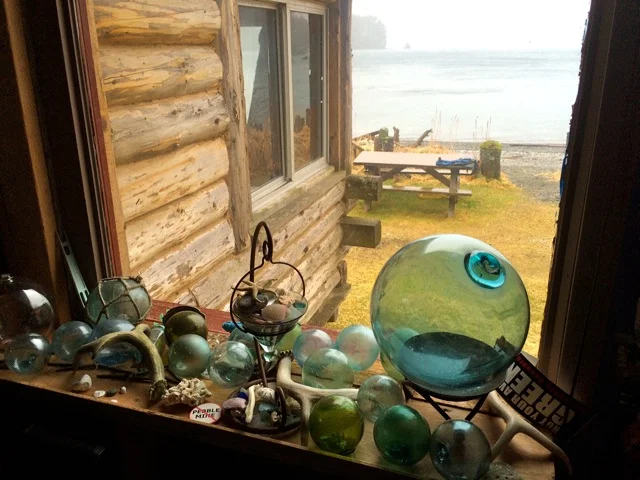On July 4, 1915 Filipino cannery workers at the Alaska Packers Association’s Larsen Bay salmon cannery orchestrated a parade and pageant, the likes of which the west side of Kodiak Island had never witnessed. Drummers and guitar players led the parade down the pier. Alder branches and flags were attached to fish carts, turning the carts into parade floats. Within the carts were costumed men. One was dressed as Uncle Sam, another as an American Indian. Acrobats balanced in a human pyramid while workers dressed as policemen looked on.
This day is recorded in a photograph collection at the University of Alaska Fairbanks. These are the earliest known photographs of Filipinos in Kodiak. Filipinos today are the largest minority on Kodiak Island. This remarkable photo collection provides a glimpse of how two peripheries of American imperialism—Alaska and the Philippines—came together in canneries at the turn of the 20th century, and an opportunity to trace Filipino participation in the Pacific seafood industry.
Paul Lewis and Diane Rodill pose in front of the Larsen Bay cannery on the Fourth of July, 2015. Diane's father, Denis, was one of the Alaskeros who took part in the 1915 parade and pageant. Diane and her husband, Paul, traveled to Larsen Bay in honor of the 100 year anniversary of Diane's father working in Larsen Bay.
Filipinos have been a mainstay of the seafood industry for a century. Before that, “Manila men” were on many early Western voyages to Alaska. But it took two events to prompt Filipinos to begin working in Alaska’s seafood industry-- the 1882 Chinese Exclusion Act and the Spanish-American War.
With the Chinese Exclusion Act, Congress prohibited Chinese from immigrating to the US. White nativists felt Chinese workers were taking white jobs and threatening their perception of white American identity. These sentiments coincided with an economic depression and a nation-wide debate about “wage slavery” in post-emancipation America.
It also coincided with the beginning of the canned salmon industry. Chinese were skilled tinsmiths. Chinese workers did the grunt work that most white Americans avoided, such as butchering salmon and filling cans on the North Pacific’s most remote shorelines.
It was on the labor of these Chinese cannery hands that much of the Pacific salmon industry was based, but due to the Chinese Exclusion Act, there weren’t young Chinese recruits to replace the aging workforce. Japanese workers, too, became important cannery employees, but in 1907 the US and Japan ended Japanese immigration to the US.
It was at this time that the first trickle of Filipinos sailed for west coast ports. These Filipinos were American nationals, since the Philippines became a US possession following the US’s victory in the 1898 Spanish-American War. Filipinos switched from being subjects of Spanish colonization to American nationals, gaining American passports. As nationals, Filipinos could travel to the US and live and work here, but that was all. They weren’t able to vote, purchase property, marry white women, or a host of other rights associated with citizenship. But work they did, nearly exclusively in low paying jobs. Many became migrant workers, shifting from farm work to salmon work from one season to the next.
These Filipino men had received American-style educations back in the Philippines, often under the tutelage of American teachers. For many, it came as a shock that the American values they had learned about were not evident when they arrived on the continent’s shores. “America came to us with bright-winged promises of liberty, equality, fraternity. What has become of them?” wrote Filipino immigrant Manuel Buaken.
For Filipino cannery workers, Chinese exclusion granted them the opportunity to enter the Alaska seafood industry since Chinese cannery hands became too old to continue the physically taxing work. Nonetheless, the anti-Asian rhetoric used to muster exclusionary immigration policies also worked to shut the door on Filipinos’ chances of becoming American citizens.
The Filipinos who paraded down the Larsen Bay pier on the Fourth of July in 1915 passed Alutiiq spectators. Like the Filipinos with whom they interacted in Larsen Bay, Alutiiq people, too, were subjects of American colonialism with few political rights. These Alutiiq onlookers were not granted American citizenship until 1924.
The Filipinos who worked in Larsen Bay in 1915 represent the earliest wave of Filipino immigrants to the US, following the Spanish-American War. Perhaps the patriotic pageant that they executed on the cannery’s boardwalks was a way to prove their knowledge of American customs, history, and values and, at least for a day, take part in reenacting the American dream.
To learn more about the early history of Filipino cannery workers--- and hear from the daughter of one of the men who paraded in 1915--- visit http://kmxt.org/2014/10/way-back-in-kodiak-filipinos-in-larsen-bay-1915/.

